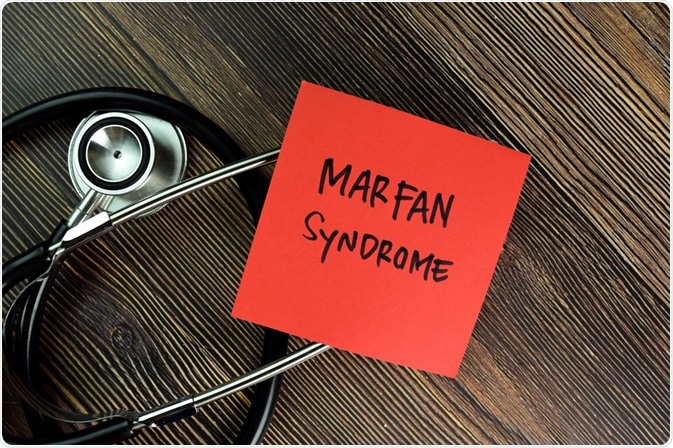The presenting symptoms of Marfan syndrome can be highly variable and, as a result, the diagnosis of the condition can be difficult. A detailed family and medical history should be taken to establish a clear picture of the individual’s health status, in addition to a physical examination and some diagnostic tests to confirm the diagnosis.

Image Credit: bangoland / Shutterstock.com
The diagnosis is most commonly made in the adolescent years, as this is the period when individuals tend to go through growth spurts and the symptoms of the condition are most evident.
It is difficult to diagnose the condition in childhood because the signs and symptoms are broad and may be confused with other health conditions. If Marfan syndrome is suspected in a young child, a tentative diagnosis can be made to allow for closer monitoring of symptoms and timely treatment if required.
Family and medical history
In the initial consultation, both the family and medical history should be discussed in detail.
The medical history can help to identify any past signs or symptoms the patient may have experienced that may be indicative of Marfan syndrome. There is also a possible genetic link for the inheritance of Marfan syndrome; therefore, if the syndrome has affected a close family member, it is more likely that the patient will be affected.
Physical examination
The physical examination is designed to monitor for the specific symptoms that typically affect people with Marfan syndrome in the early stages of the disease. This usually involves listening to the heart, as well as examining the skin for evident stretch marks and the body for features of the syndromes, such as long and thin limbs.
What is Marfan Syndrome?
Diagnostic criteria
The Ghent criteria are a diagnostic tool that aids health professionals in diagnosing Marfan syndrome and differentiating it from other syndromes with similar symptoms.
There are both major and minor criteria. Whereas major criteria are signs that are common in affected individuals but rare in healthy individuals, minor criteria are common in both populations. To make a diagnosis of Marfan syndrome, the patient should have two of the major criteria and one of the minor criteria.
Major criteria for Marfan syndrome include:
- Enlarged aorta
- Aortic tear
- Dislocation of the eye lens
- Family history of Marfan syndrome
- At least four skeletal problems (e.g. flat feet or scoliosis)
- Dural ectasia
Minor criteria for Marfan syndrome include:
- Myopia
- Stretch marks
- Loose joints
- Long, thin face
- High and arched palate
Other diagnostic tests
In most cases, Marfan syndrome is diagnosed based on the physical feature and the Ghent criteria. However, it may be necessary for patients to undergo further testing to confirm the diagnosis and differentiate the condition from other syndromes such as Ehlers-Danlos syndrome and Beals syndrome.
Other diagnostic tests that may be used to diagnose Marfan syndrome include:
- Optic examination by an ophthalmologist to confirm lens dislocation
- Echocardiogram to screen for abnormalities of the aorta
- Chest X-ray to highlight abnormalities of the bones, heart, and lungs
- Magnetic resonance imaging (MRI) scan to examine aorta and detent dural ectasia
Additionally, genetic testing for Marfan syndrome can be carried out, although it is difficult because the identified gene can mutate in many different ways. Currently, the available testing can detect genetic abnormalities in 97% of patients with the disease. However, genetic testing is often costly and can take several months to provide accurate results.
References
Further Reading
Last Updated: Feb 24, 2023